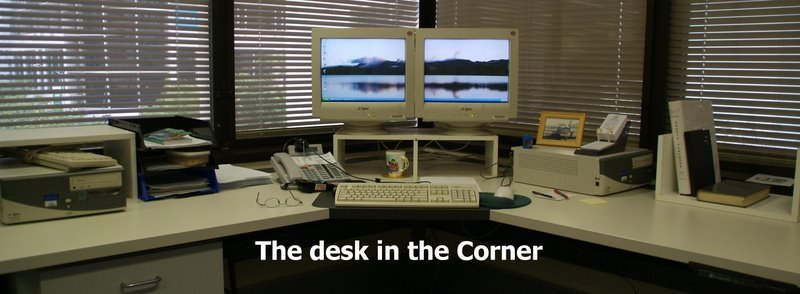The balloon has gone up
I'm not actually sure what that phrase means, I think it has something to do with a situation getting serious. In my case, it has to do with watching a weather balloon being launched at Brisbane airport this morning.
As well as my application to become an air traffic controller, I also have an application in to become a meteorology observer. I have an interview coming up soon, so this morning I went out to the met station at Brisbane airport to see what the observers do.
Around 9am every morning (and again at 9pm) they send up a weather balloon with a radiosonde attached. The radiosonde transmits temperature and humidity data, and the balloon is tracked by radar to get the wind speed and direction at different altitudes. At 3am and 3pm, smaller balloons are sent up without the radiosonde, just to get the wind data.
Above is the balloon ready to be remotely inflated with hydrogen. The reflector is just alfoil stuck to styrofoam and the radiosonde hangs underneath.
If you look closely, you can see the radiosonde hanging below the balloon. It ascends at around 1000ft per minute, so it disappears from view pretty quickly. The radar tracks it automatically until the balloon bursts at around 35000 ft or higher.
The round building above is where the balloon is inflated and released from. The warning light with the yellow sign flashes when the balloon is being inflated, because the hydrogen in the balloon is so flammable. The observers ring the control tower to let them know they're about to launch, but at night the guys in the tower can see the light flashing and already know why they're ringing.
Observations are taken regularly using the gear shown in the photo above. There's stuff there to measure soil temperatures, evaporation rates, air temperature and humidity, cloud heights, horizontal visibility and even a glass ball that burns a piece of paper to measure the amount of sunlight per day. The white thing about a quarter in from the left of the pic is a laser that measures the cloud height.
The round thing above is what they use to measure evaporation rates. It's covered in mesh, probably to stop frogs breeding in it, and they top it up each day to see how much it had evaporated. The thing near the bottom left corner of the pic has five thermometers in it to measure soil temperature at different depths. The thing to the left of the evaporation tank (or pond) is the glass ball that measures the daily sunlight.
Everyone has probably seen the white boxes that hold thermometers, there's one in the middle of the above pic. There's also a couple of rain gauges there. The brown thing near the middle of the pic is actually a museum piece that used to measure rainfall rates on a rotating paper chart.
If I end up getting a job with the bureau, I'll be trained how to use all this gear, and could be doing the job anywhere in Australia, that includes Australia's Antarctic stations, Lord Howe and Norfolk Islands. Or I could end up working at Brisbane airport.
Fingers crossed, the interview is on the 24th.

No comments:
Post a Comment